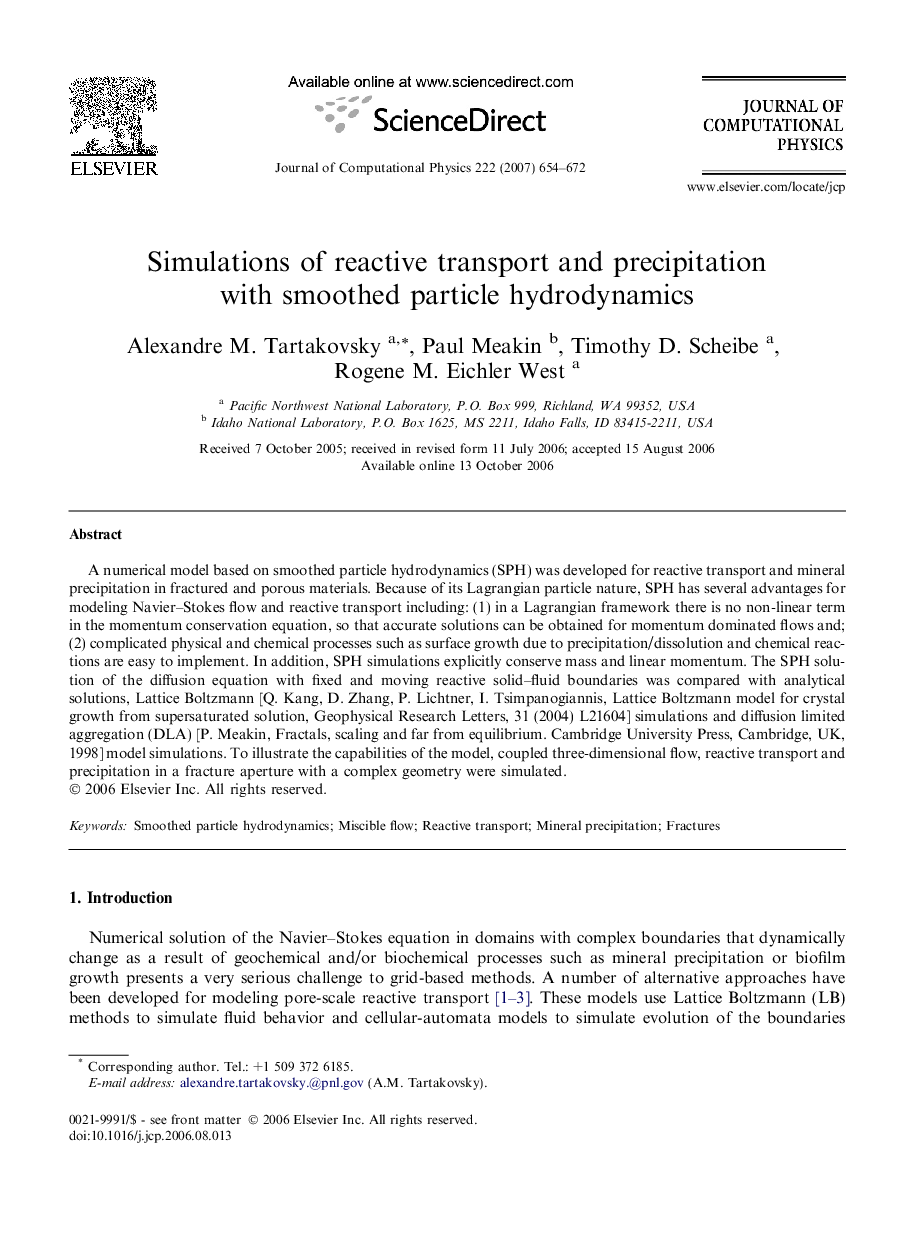| کد مقاله | کد نشریه | سال انتشار | مقاله انگلیسی | نسخه تمام متن |
|---|---|---|---|---|
| 520935 | 867742 | 2007 | 19 صفحه PDF | دانلود رایگان |

A numerical model based on smoothed particle hydrodynamics (SPH) was developed for reactive transport and mineral precipitation in fractured and porous materials. Because of its Lagrangian particle nature, SPH has several advantages for modeling Navier–Stokes flow and reactive transport including: (1) in a Lagrangian framework there is no non-linear term in the momentum conservation equation, so that accurate solutions can be obtained for momentum dominated flows and; (2) complicated physical and chemical processes such as surface growth due to precipitation/dissolution and chemical reactions are easy to implement. In addition, SPH simulations explicitly conserve mass and linear momentum. The SPH solution of the diffusion equation with fixed and moving reactive solid–fluid boundaries was compared with analytical solutions, Lattice Boltzmann [Q. Kang, D. Zhang, P. Lichtner, I. Tsimpanogiannis, Lattice Boltzmann model for crystal growth from supersaturated solution, Geophysical Research Letters, 31 (2004) L21604] simulations and diffusion limited aggregation (DLA) [P. Meakin, Fractals, scaling and far from equilibrium. Cambridge University Press, Cambridge, UK, 1998] model simulations. To illustrate the capabilities of the model, coupled three-dimensional flow, reactive transport and precipitation in a fracture aperture with a complex geometry were simulated.
Journal: Journal of Computational Physics - Volume 222, Issue 2, 20 March 2007, Pages 654–672